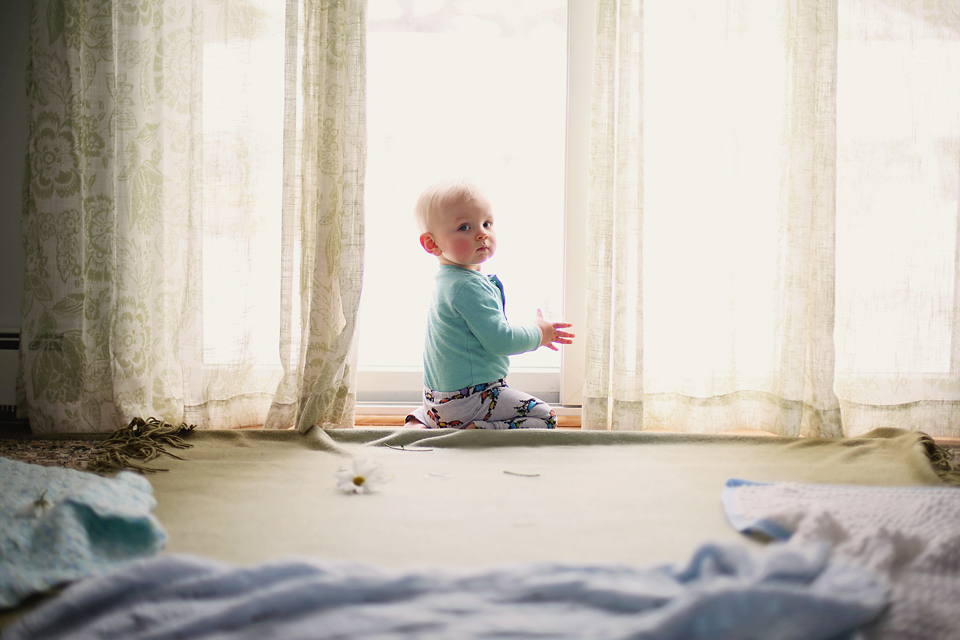
Finding Safe Baby Products for the Entire Home

Now that Roman and Marina are basically out of the “baby stage” and well into childhood, I’ve been doing some reflecting on the early years. I am going to share a series of posts featuring things that I’ve learned along the way. This first post will discuss some guidelines for finding safe products for your home. It’s geared toward those who may be just creating a baby registry, cleaning the nursery or finalizing the family’s monthly budget. That’s when you start thinking about the safety of all of the things surrounding your baby.
It’s easy to get paranoid and start to panic that your house is a minefield for your kids. We can’t protect them from everything, but we can make informed decisions about the products we buy. Start by focusing on three key areas of the home.
Nursery
Your new little bundle of joy will spend a lot of their time in the nursery sleeping (if you’re lucky!). Before finalizing the décor make sure the products you select are safe for baby’s cocoon.
Non-Toxic Mattress
Few moms realize when they lay their babies down to sleep they may be surrounded in toxins. Some of the materials used to create crib mattress are known to off-gas volatile organic compounds (VOCs).
The healthiest crib mattresses are made with hypoallergenic materials and have been VOC tested, material content tested and performance tested for safety. They should also be a standard size and fit in the crib precisely.
Organic Bedding
The fitted sheet that’s over the mattress is equally important. The sheet comes in direct contact with your baby’s skin, which can be bad news if they have a skin allergy. One of the safest and most comfortable options is an organic cotton sheet with natural dyes. Word of Caution: Health experts now warn that parents should practice safe baby sleeping habits and not include pillows or blankets in the crib.
Low/No-VOC Paint
VOCs are also commonly found in paints and stains, but that doesn’t mean you have to leave the nursery stark white. Today there are low and no-VOC paints that emit virtually no toxins into the air.
Kitchen
It’s the heart of the home and the place where you nourish your family. When you’re together at the kitchen table keep at eye out for ways to add healthier products.
Food Without All the Additives
There’s no denying that the food we consume has a powerful impact on our overall health. Once your baby starts to wean it will be time to consider solid food options.
Companies like Beech-Nut make natural baby food that’s free of all the unnecessary additives and fillers. Plus, the fresh ingredients taste yummy. Anything that gets my kid to eat healthy without a fight is a win in my book.
High Chair
There are a number of high chair designs on the market, but they aren’t created equal. First and foremost, bypass any high chairs that don’t have adequate safety restraints. Adjustable high chairs are ideal because you can make sure your baby fits in snuggly and won’t slip out.
Bathroom
Sometimes getting clean can be the biggest health hazard if you don’t use the right products. In general, you’ll want to stick to gentler products that are formulated specifically for babies.
Hair Products
Non-toxic is the number one priority for baby shampoos. You may be tempted to reach for the “no cry” or “tear-free” products, but resist the urge. Many of those products contain potentially harmful chemicals like formaldehyde-releasing chemical called 1,4-dioxane. Other things to watch out for are the regular culprits: parabens, sulfates, phthalates, fragrances, and dyes.
Soaps
Much of the advice for hair products remains true for soaps. If your baby doesn’t have much hair, you can skip the baby shampoo and dab on a little soap the clean their head. At this stage, there really isn’t much of a difference and it can save you a little cash.
Towels
Like the crib sheets, organic cotton towels are a healthy option for baby bath time.
Baby Tubs
Both the design and materials used to make a bathtub can be a health concern. One crucial feature is a thick plastic shell. Thicker plastics hold their shape and won’t give way to weight when water is added. However, it’s important to look for baby tubs with phthalate and BPA-free plastics.
Even after you purchase products you have to stay diligent. Regularly check the consumer product recall notices to make sure you’re not unknowingly using faulty products.
I hope that you enjoyed this first post in my series, friends. There’s more to come including the topics of parenting a high-needs baby, breastfeeding, healthy sleep habits, and more.
If you have any safety tips to add to this list, please leave them in the comments.
